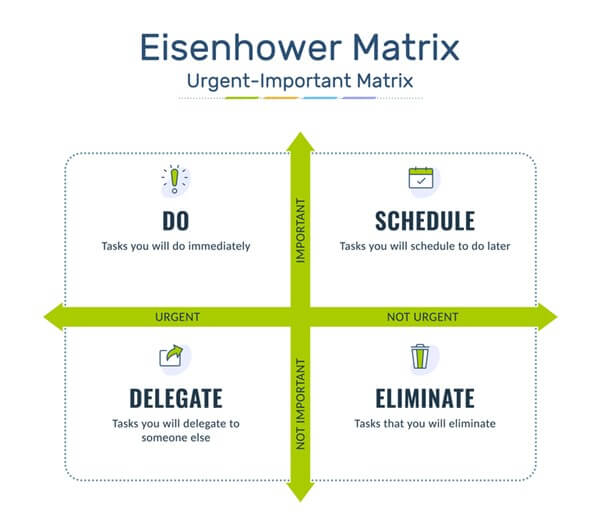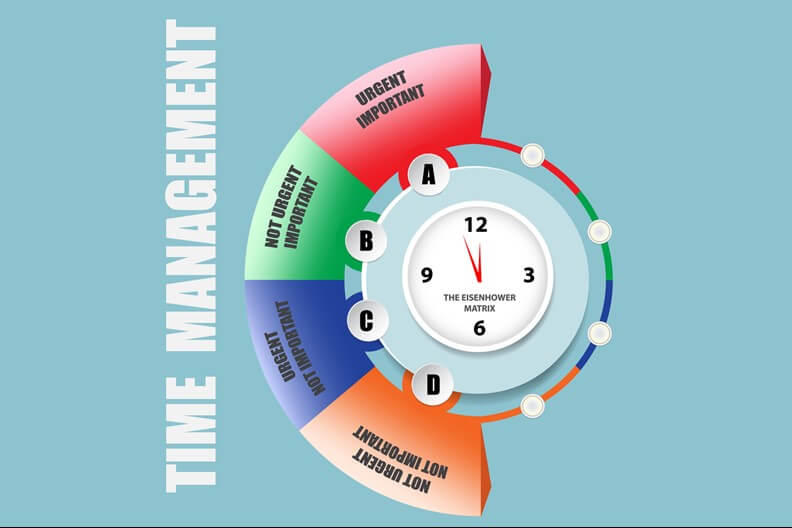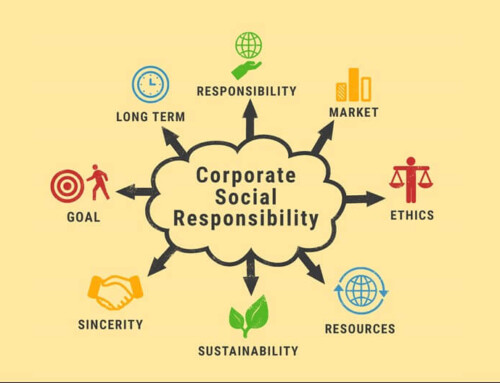In the fast-paced and demanding world of leadership, mastering the art of setting priorities and boundaries is crucial for success. One method that can help leaders in this quest is distinguishing between urgent and important tasks. By understanding this distinction, leaders gain the ability to make informed decisions about where to invest their time and energy. Additionally, leaders can find clarity, streamline their efforts, and regain control over their workdays. This approach empowers leaders to focus on high-payoff activities that align with their long-term goals, while minimizing time spent on less significant matters. Through clearer priorities and boundary setting, leaders like you can drive organizational success, boost productivity, achieve a healthier work-life balance, and cultivate a more vibrant and fulfilling workplace culture.
The Eisenhower Principle (Important-Urgent Matrix)
Named after former President Dwight D. Eisenhower, the Eisenhower Principle helps to prioritize tasks based upon their importance and urgency. It’s considered a powerful, yet simple tool for leaders to use to boost their productivity and decision-making. The objective of the principle is to help leaders to focus energy on the things that matter most, do them very well and ignore the ones that aren’t relevant to the organization’s mission. Additionally, the principle aids leaders to identify the activities that have the most impact with the least effort, to empower their people and to participate in meetings when their presence matters the most. Ultimately this frees up time and space for leaders to be highly productive instead of being pulled in many directions.
Defining Important versus Urgent
On the surface, important and urgent seem like similar words. However, they have different meanings, especially in the context of the Eisenhower Principle.
- Important encompasses activities or tasks that are significant to your long-term personal and/or professional goals. These tasks may or may not have specific deadlines, immediate consequences, or time constraints. The focus here is on activities that align with your overarching objectives and contribute to your success in the long-term. By recognizing and prioritizing these important tasks, you can make meaningful progress toward your goals and ensure that your efforts are directed toward what truly matters.
- Urgent consists of tasks or activities that demand immediate attention and have unavoidable consequences if not acted upon promptly. These urgent items are crucial for supporting others in pursuit of their goals and ensuring their needs are met. By identifying and addressing these urgent tasks, leaders can effectively manage time and support the success of their teams.
Leaders can utilize the Eisenhower Principle to set boundaries and prioritize tasks by relevance:

WHAT TO DO FIRST
Is the task both urgent and important? If so, then it gets top priority.
A general rule of thumb is to prioritize activities first based on the consequences of not acting or missing a deadline. These tasks are your top priority because these directly impact your long-term goals. Obviously, a crisis or other unforeseen activity would fall into this section. However, last-minute items or procrastination tasks, whether on your plate or brought to you by others are also urgent and important activities. Procrastination is linked closely to poor time management or can be due to poor leadership such as absent management, or micro-management, or unclear expectations of the team. Leaving time slots open in your day-to-day schedule can account for these kinds of unplanned incidents and make things less chaotic.
PRO TIP: Procrastination by others can be a complicated issue. Leaders should be aware that it may be caused by issues with morale, low motivation, burnout, or other issues related to the workplace itself. Alternatively, it can be an issue with stress or time management. Regardless of the issue, a good leader can establish boundaries with regular meetings to find out what’s behind the issue, ensuring other team members equally contribute, adding milestones, and acknowledging improvements.
WHAT TO SCHEDULE
Is the task important but not urgent? Then it gets second priority.
These are activities that consume most of your time as a leader so they should be done well. Make sure you allocate sufficient time and if necessary, block off uninterrupted time to complete them. When you are determining the priority to complete these tasks, utilize the 80/20 rule (or the Pareto Principle.) The highest impacting tasks should be completed first. The daily goal is to complete 20% of your daily tasks that have an estimated 80% meaningful impact on your team. For example:
- What’s stopping something from going forward because you have all the information, data, etc. but haven’t made a decision?
- What problems could be solved, or innovation could be created if you presented an issue or concept to your team, allow them to collaborate, and circle back with them at a later time?
- Have you set performance expectations only to discover that your team isn’t progressing as quickly, or a project has gone off track?
- Are you focusing too much energy on weak performers instead of spending more time with top performers, key contributors and others who create a thriving culture?
WHAT TO DELEGATE
Is the task not important but urgent?
Leaders can have heavy workloads, especially if they try to do everything themselves. It’s important to learn what tasks are important to your goals and what activities are ideal for independent decision-making, delegation, peer mentoring and collaboration.
- Independent Decision-making – You can empower skilled, experienced, and knowledgeable employees with a proven track record by providing them with a clear decision-making process. For example, a wise decision-maker will make decisions that have the best outcomes for themselves, others, and the organization. They won’t limit decisions by being biased or closed-minded and will utilize rational thinking to ensure that their choices align with the organization’s values and/or goals.
- Delegation – While delegation can be helpful to leaders in managing workloads, it’s also helpful for professional growth, accountability, and identifying top performers and future leaders. When done effectively, delegation should improve a team’s overall performance by enhancing productivity and time management skills.
- Peer Mentoring – The transfer of knowledge and personal experience shared between peers differs from training programs or management coaching. This is because it’s not just about learning skills or more in-depth job knowledge. It provides a key contact for job-related challenges and advice from someone who has experiences outside of the leadership role. This is effective for improving employee retention as well as building future leaders from within.
- Collaboration – Diversity of ideas, opinions and strategies are the key elements of problem-solving, innovation as well as building strong teams, resilience, trust, and engagement among employees. Additionally, it encourages information sharing, listening, communication skills, and peer recognition, as well as ensuring everyone feels valued.
PRO TIP: Another way to manage your workload is to re-evaluate the needs of specific individuals. If you have someone who is frequently asking questions that are not important but urgent, perhaps it may be time for a refresher course or more hands-on training. Alternately, if it is a new hire or someone in a succession role, you may want to reassign this task to “important but not urgent” so you can have a consistent schedule for coaching or mentoring with you personally.
WHAT TO ELIMINATE
Is the task neither important nor urgent?
Activities that are distractions or don’t align with the organization’s goals or your personal objectives aren’t priorities. These are where clear boundaries should be set and enforced. An example is an employee who wants advice about a non-related work matter during business hours. One study found that leaders spend an average of 2.5 hours per week helping employees with personal problems. (1) This is time that could be spent doing more productive activities. In cases such as this, you can be empathetic but also cut the conversation short.
Another example of a not important, not urgent activity is the constant checking of email or text messages; or excessive or irrelevant texts, calls, or emails regardless of who sends them. This can be a more difficult distraction to resolve as it requires behavior modification. If distractions overtake your day, it may be time to shift your mindset. Try focusing on one or two of your goals that get you excited or inspired enough that you no longer want to fill time with distractions. This will help you prioritize your day with activities that align with your objectives and eliminate those that don’t.
Differentiating between urgent and important tasks is crucial for leaders in setting priorities and boundaries. By understanding this distinction, leaders can make informed decisions, boost productivity, and reduce stress. Embracing the power of defining priorities and setting boundaries enables leaders to focus on high-impact activities aligned with long-term goals. This approach drives organizational success, fosters work-life balance, and cultivates a productive workplace culture.
Is a leadership retreat or team-building group travel program in your organization’s future? Contact Gavel International for more information about corporate meeting planning services.
______________________________
SOURCE(S):
1 https://news.warrington.ufl.edu/faculty-and-research/leadership-sos-first-ever-study-finds-that-leaders-are-in-worse-mood-after-helping-employees-with-personal-issues/







